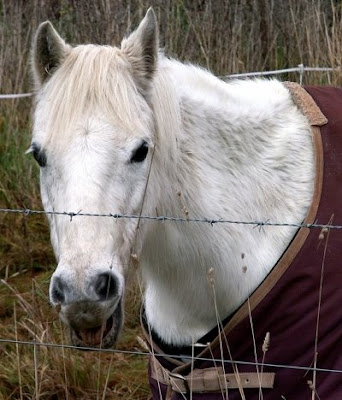Researching for my recent entry about irresponsible breeding brought me to a photo that, well, explains a lot.

This isn't the worst fence I've seen, by far, but it is not safe for pony foals just about small enough to walk under it, nor is it adequate to keep stallions separated from mares and fillies they shouldn't be breeding.
One strand of electric wire is nearly invisible. It is too high for the smallest of them, yet any lower and it would be too low for the taller animals.
I've shared in the past some grisly photos of accidental impalement on uncapped T-posts. It's not pretty, and can easily be fatal if not simply gory and expensive to treat and heal.
There are safer fence options that don't cost a whole lot more than this and are not terribly difficult to install.
XP
P.S. It is also unsafe to turn out a horse with a nylon halter with no emergency break-away. Horses can get hung up on fence posts, trees, or their own hind hoof while trying to scratch, and playful foals are particularly in danger of becoming snared on another horses' halter that is too strong to break when either animal panics.




































